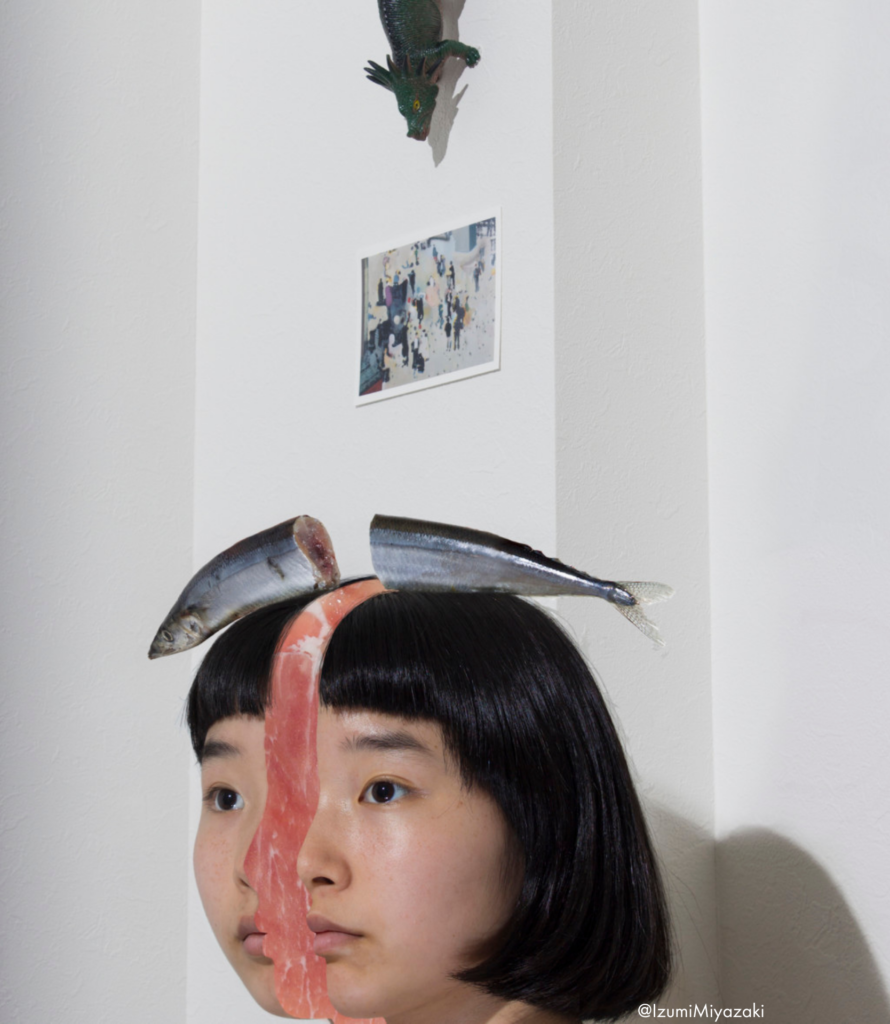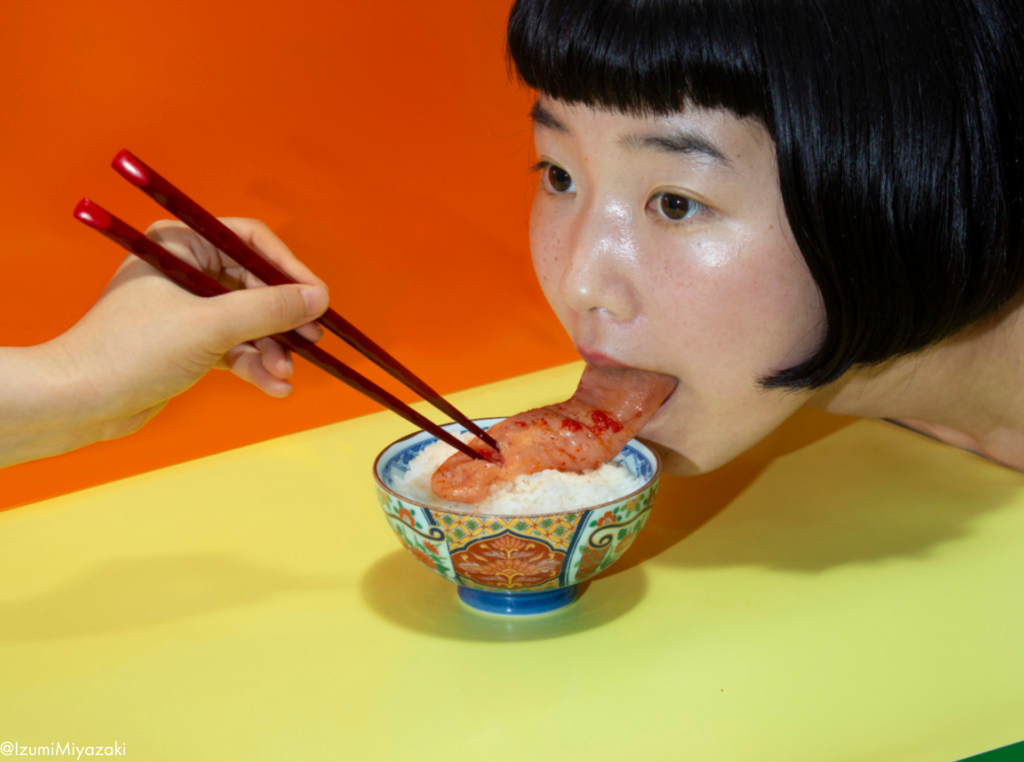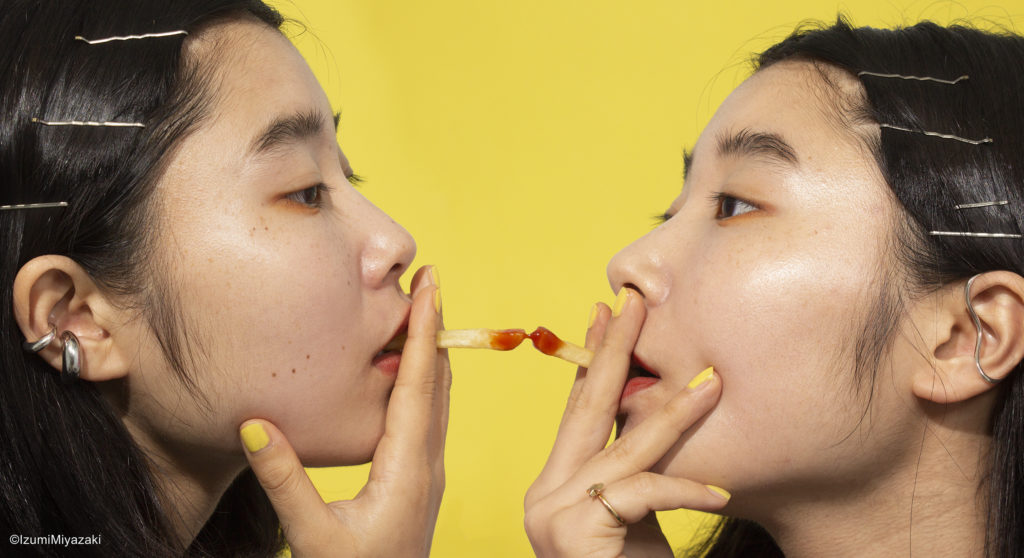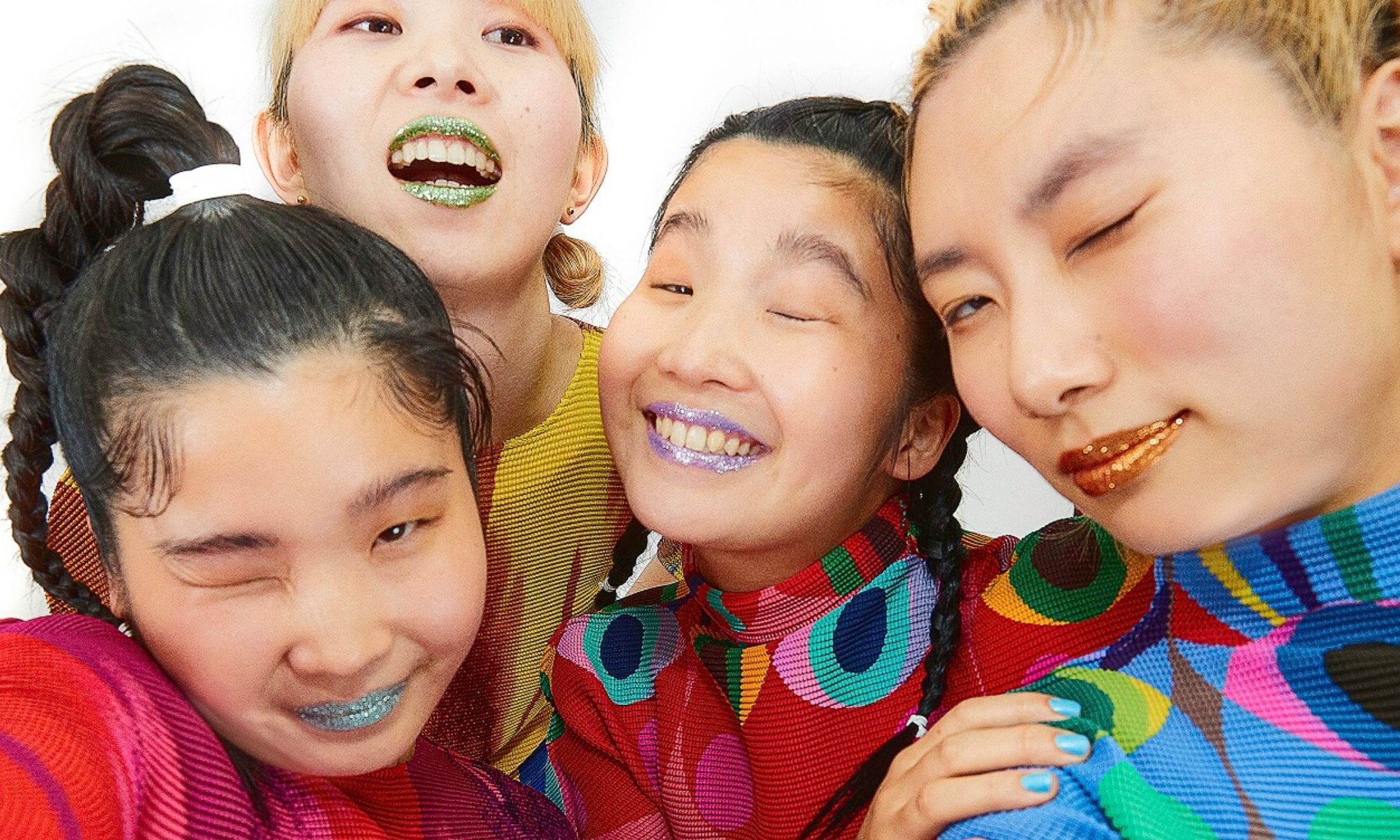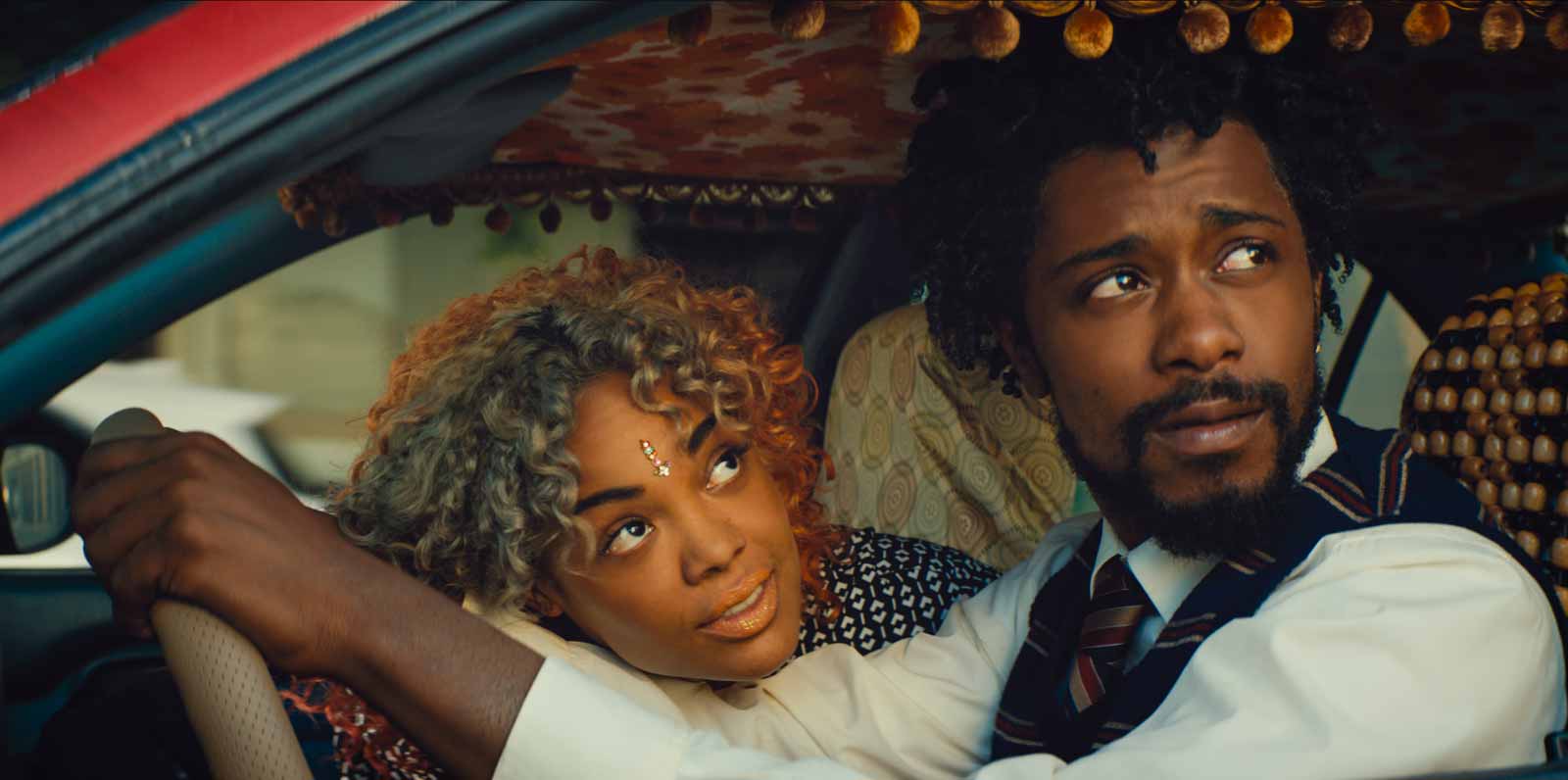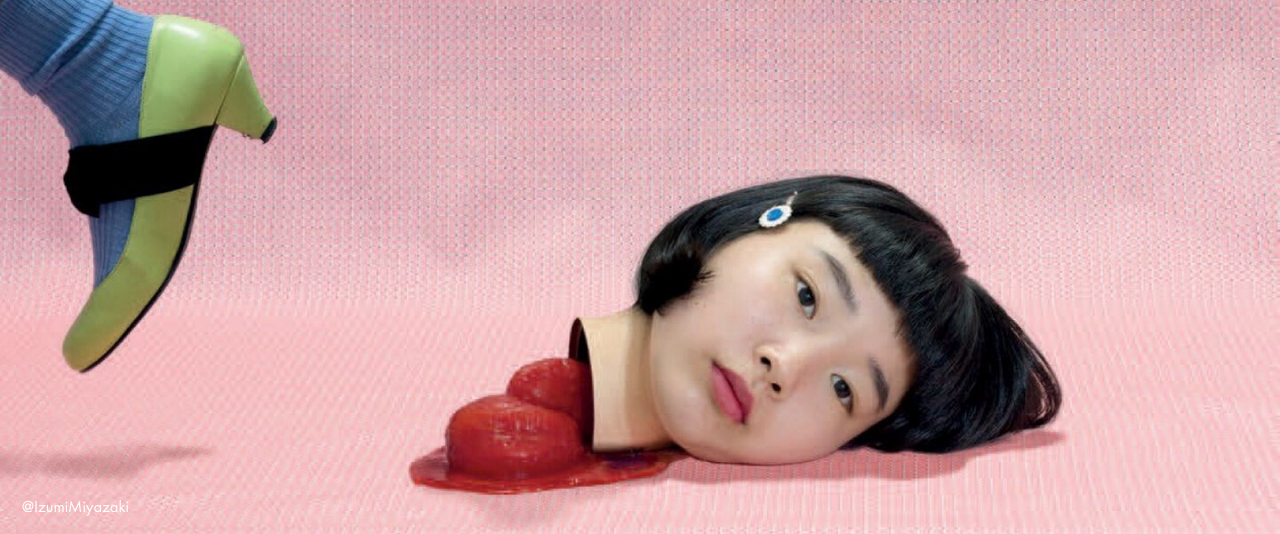
Photography by Izumi Miyazaki
Kawaii meets gore in Izumi Miyazaki’s surrealist fantasies
Food and props help this Japanese photographer to create absurd and humourous selfies in isolation.
Thái Hà
10 Jun 2020
Witty, whimsical and surrealist, Izumi Miyazaki’s photographs not only capture the spirit with which she approaches her practice, but also reveal how she perceives the world around her. Each image is unmistakably an Izumi masterpiece, irreverent, bright and idiosyncratic. Through self-portraiture, Izumi takes on the role of photographer, muse and model all at once, perhaps to send proof – quirky, sarcastic proof – that if all else fails, we still have ourselves at our disposal.
“It might be rare to finish everything alone,” she says of her creative process over email – she finds it easier to communicate in written English rather than spoken. “It means everything is up to me. I can do everything freely so I can change initial plans easily. Also I don’t have to compromise because of others. These are good things in making work.”
As someone who prefers to stay home and is ready to admit that she has few friends, photography is “a trigger to think about [herself]”. Recurring in her works is a stoic, unsmiling expression that becomes the focal point of many bizarre settings. In taraco – one of many of her works that Photoshop out body parts for food items – she sticks out a freakishly long tongue made from the titular salted pocket of cod roe, sitting atop a bowl of rice ready to be eaten. Though the image is grotesque enough to put anyone off their appetite, creating imagery of humans as food facilitates her pondering her role in the world. “I think [this image] reminds us we’re also animals, like fish and other mammals”, Izumi explains. “We are human beings when we are alive but suddenly we can become objects, like food, at the moment of death”, she bleakly elaborates in an interview with plastik. Izumi is hesitant to send an environmental message but, digging at our anthropocentrism, she admits: “I might want to be sarcastic to cocky people who seems to think they’re special.”
Despite the “literal freedom” to decide everything for herself in the process of making self-portraits, it is by her own admission a “more narrow view” – that is evident in her photographs, where she often removes visual depth. Rather than flattening the image this allows her to zoom in on the different versions of herself and showcase them front and centre. “[In] doing self-portraits, you consciously make other various you,” she says. The many iterations of Izumi pictured act as different facets of her character. In works such as baguette and sandwich, her inner child is on show. Her characteristic deadpan expression, be it when balancing baguettes as rabbit ears or when stuck between two slices of a white loaf, doesn’t detract joy from the portraits but instead adds an extra layer of humour. Women are often patronised when maintaining cuteness in adulthood because it lacks “assertiveness” and “professionalism” – the hallmark ideas of “Lean In” feminism. Yet, Sharon Kinsella writes in her chapter Cuties in Japan that cuteness is a critique of adulthood: the lack of free time, the tight regulations, the expectation to conform. In creating a space just for herself and making what she wants, Izumi illustrates how the so-called infantilism of kawaii culture can be “a refusal to cooperate with established social values and realities,” as Kinsella notes.
In her previous interviews and so too for this profile, Izumi is quick to point out that her work is primarily for herself.“The themes tend to be more personal,” she explains. She does not feel that her work has a particular style, nor does she follow a set of guidelines to create it. In fact she seems hesitant to give any in-depth analysis of the story inside the images out of fear that that may stop the viewer from absorbing personal meanings from the work. “I think revealing the [behind the scenes] of creating isn’t a great thing. People might not be able to see the works because of the unnecessary information,” she adds.
“Many people can’t avoid confronting themselves right now. It means they might gradually be able to see themselves objectively”
Her refusal to over-explain herself in interviews speaks to how she always wants to maintain full creative control. In her recent online exhibition, It’s my turn to talk, the texts she wrote to accompany her photographs convey a truer essence of her voice: her playful spirit, her humour, and again that hard-to-pin-down irreverence, something she holds back when she knows her words will be passed through somebody else’s filter.
What Izumi has made clear, though, is that our instincts are a powerful tool in the creative process, and running with those instincts can give our works new ability to speak. While coincidental, her modus operandi seems particularly suited to these isolated times. “I’m not sure if I’m maintaining motivation, but I’m not the type of person who really likes to go out anyway. It isn’t really hard for me to be made to stay home. Artists like me might be able to use this period as a beneficial time. Many people can’t avoid confronting themselves [right now]. It means they might gradually be able to see themselves objectively.”
For photographers who are used to crowded sets, Izumi’s practice offers a different way of working that invites greater introspection. No outside influences, no misinterpretations, just an intensely personal and surrealist representation of her complex personality. If you really wish to understand Izumi you will have to do so through her brilliantly absurd portfolio.
Me, Myself and I is a week-long celebration of self-portrait photography focusing on the power of creating art alone.

